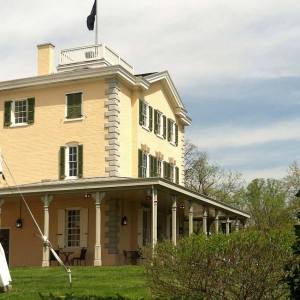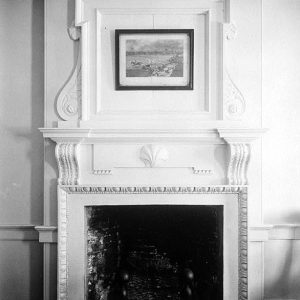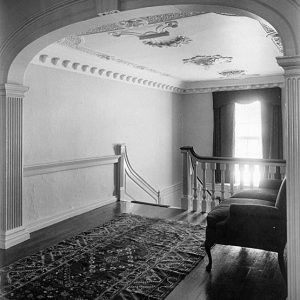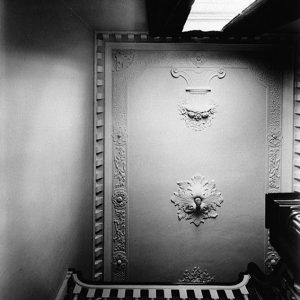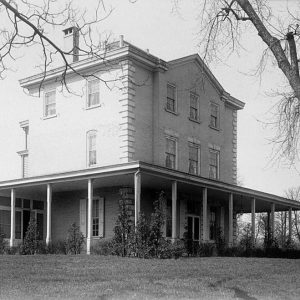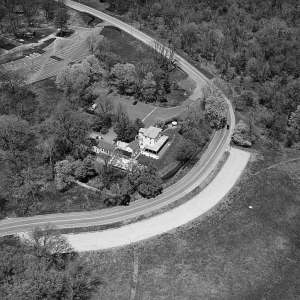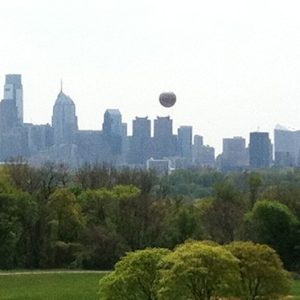Belmont Mansion
Fairmount Park West, Philadelphia, PA
Completed as a mansion in 1755 from the original cottage on the property, Belmont was the country seat of William Peters, an Englishman who practiced law in Philadelphia. He held various public offices on account of his connections with the William Penn family. An Anglican and son-in-law of a man expelled from the Quaker Meeting House, Peters was an “outsider” in Philadelphia society. His “country retirement home” was actually completed before owning a townhouse in the city proper. Belmont Manor was acquired by the Fairmount Park Commission in 1869.
The land was once owned by John Skutten and John Boelsen (see the 1684 Boelson Cottage in Fairmount Park), and sold to Peters in 1742. The building passed to his son, Richard Peters Jr., who managed to keep the house from destruction during the Revolutionary War. Many dignitaries visited the house including the Marquis de Lafayette, George Washington, Benjamin Franklin and other Founding Fathers.
Restoration efforts by the American Women’s Heritage Society, with support from city and private sources, began 1986 to save the building from demolition. The Underground Railroad Museum at Belmont Mansion opened in 2007. Exhibits demonstrate the life of Judge Richard Peters and his family, with extensive exhibits about runaway slaves the family hid in the basement and attic. Area schools have field trips to the museum in the spring. The grounds are open to the public and separate rooms – or the entire mansion – can be booked for wedding and events. One of the best views of Center City since Revolutionary times.
Description
Brick and rubble with stone trim, approx. 40′ (three-bay front) x 35′ with attached one and two-story buildings, three stories (originally two), hipped roof with balustrade projecting center pavilion with gable, open porch on three sides; central great hall plan, notable interior details.
Two-story gambrel-roofed rubble cottage W of mansion built before 1742; semi-octagonal bay added ca. 1744. Two-story gable-roof house at SW cor. of mansion built 1745. Mansion built ca. 1755; rear stair tower, front porticoed porch built ca. 1760; ornamental ceiling of great hall installed ca. 1762; third story, lattice porch across front built before 1860; porch extended around sides after 1867. Stairway of 1745 house removed 1874; octagonal bay at S end removed 1876; interiors rehabilitated 1926; one-story brick building at W cor. of rubble cottage built after 1931, demolished 1972.
Fine example of evolutionary growth of a country house with notable early decorative plaster work. Country house of William Peters, lawyer, jurist, Register of Admiralty 1744-71, and his son Richard Peters, agriculturist, Commissioner of War for Continental Congress 1776-81, member of Pennsylvania Assembly 1788-92, noted federal jurist 1792-1828.((1979, HABS PA,51-PHILA,304 ))
History
During the American Revolution, William Peters’s son Richard joined forces with the rebel government and thus managed to hold onto Belmont. Other villa owners were not so lucky. The war effectively unseated Philadelphia’s merchant class, fragmenting it into different camps; some retained their wealth and much of their status, others lost everything. First the British took what they wanted, often destroying the properties of those who failed to side with the Crown. Once the Redcoats departed, other troubles lay in store for the wealthy.
Overt Tory sympathies were not an asset, and the Pennsylvania legislature accordingly confiscated villas like Woodford and Laurel Hill, the latter despite Rebecca Rawle Shoemaker’s claims that she, not her Loyalist husband, owned the estate. The Woodlands almost suffered the same fate, largely because of its owner William Hamilton’s taste for English architecture and landscape gardening. As pacifists who refused to take oaths, Quakers encountered much suspicion and hostility. Often they were presumed to be Tories and, like the Fishers of The Cliffs, stripped of many belongings and exiled. Merchants like Robert Morris, who contributed to the revolutionary cause, became rich, but they too endured harassment.
A broad walk of English Cherry trees leads down to the river. The doors of the house opening opposite admit a prospect of the length of the garden over a broad gravel walk to a large handsome summer house on a green. From the windows a vista is terminated by an obelisk. On the right you enter a labyrinth of hedge of low cedar and spruce. In the middle stands a statue of Apollo. In the garden are statues of Diana, Fame and Mercury with urns.
Clearly Belmont’s grounds were quite elaborate. Peters derived their design partly from [houses in] Springettsbury [where William Penn’s grandson lived], but was also highly attuned to recent English practice in architecture and landscaping. His decision to combine such naturalistic elements as the “wood” with formal avenues and allees reflects the influence of English aesthetic concepts that would not affect most other Philadelphia-area gardens for another few decades.((Schuylkill River Villas (1995) HABS PA,51-PHILA,698- ))
See Also:
- Belmont Plateau Trails Alliance (facebook)
| Underground Railroad Museum at Belmont Mansion | Federal Style |
|---|---|
| 2000 Belmont Mansion Drive, Fairmount Park, Philadelphia PA | Official Website ≫ |
| Philadelphia Register of Historic Places (1956) | Museum Hours: Tuesday – Thursday, 11am to 4pm |
